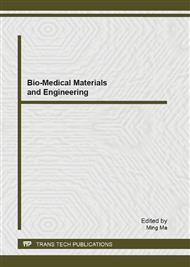p.198
p.206
p.211
p.215
p.221
p.228
p.232
p.236
p.242
Program Simulation of Cell Division and Differentiation Based on P-Code
Abstract:
By observing the process of hatch chickens, then combined with the modern biological knowledge and computer programming technology the paper proposed a hypothesis--coding sequence of DNA in cell is a set of program code sequence which includes instructions and data. And by making some program model, the paper simulated the two key procedures in life phenomena, namely cell division and cell differentiation. Then we can get some interesting ideas: If we look DNA coding sequence as program code sequence, the life phenomena is fully consistent with the principle of computer process . It is a macroscopic presentation of the life program in running status and whose code sequences were stored in DNA molecule chain. Combined with reflection calculation technology in the computer program model we also can come into an inference that Reflection technology is essential in the life process.
Info:
Periodical:
Pages:
221-227
Citation:
Online since:
August 2013
Price:
Сopyright:
© 2013 Trans Tech Publications Ltd. All Rights Reserved
Share:
Citation:


